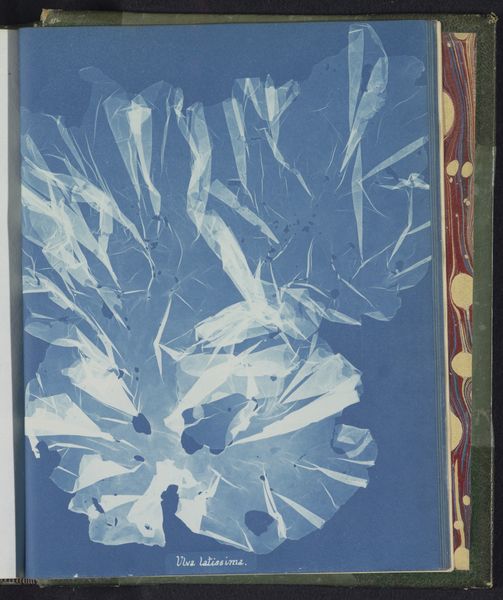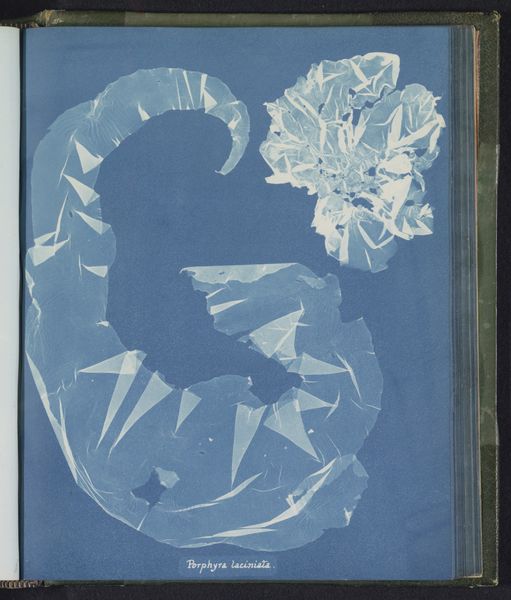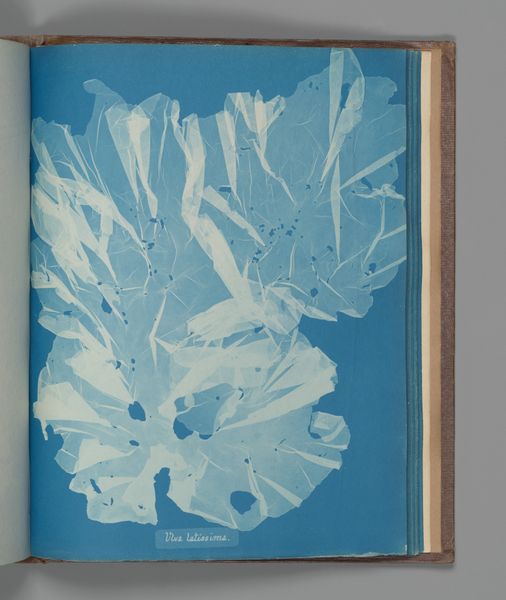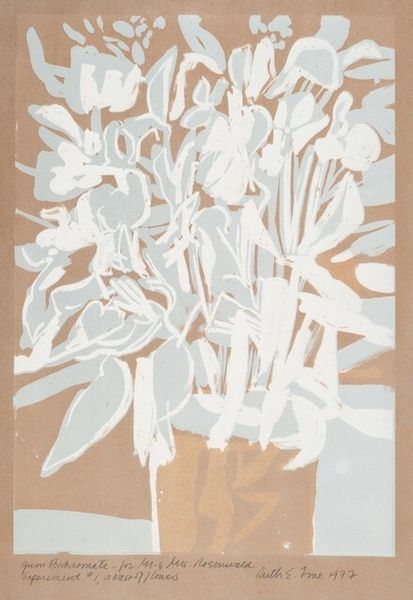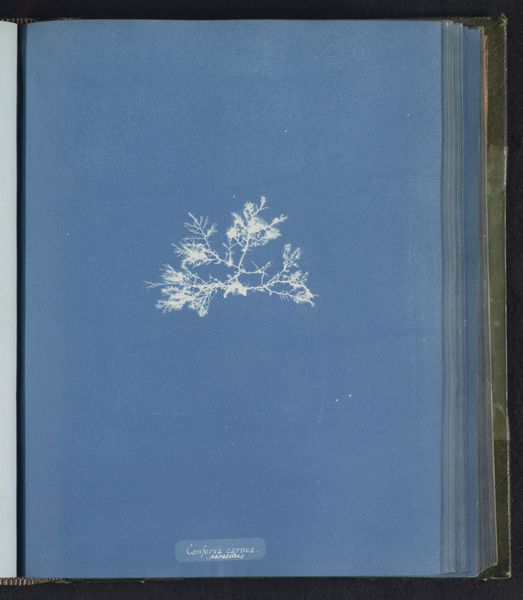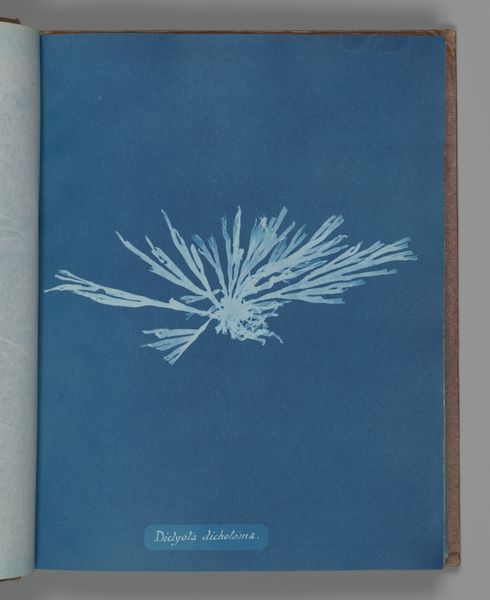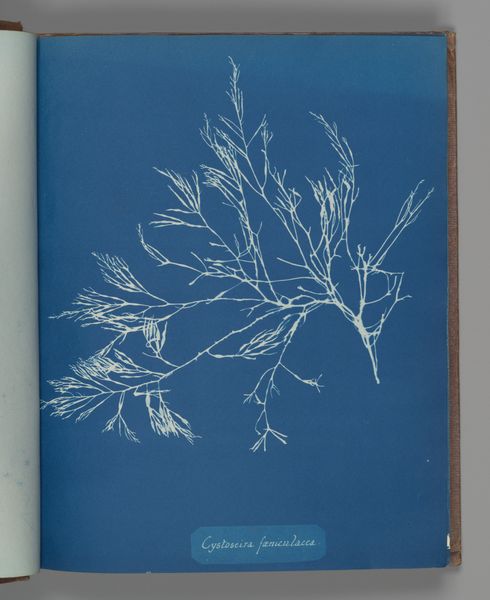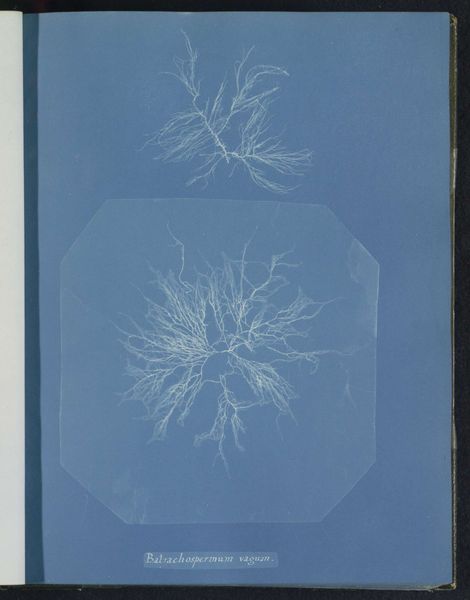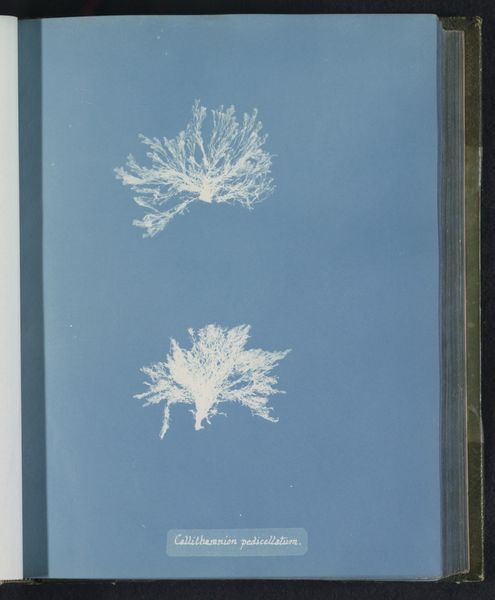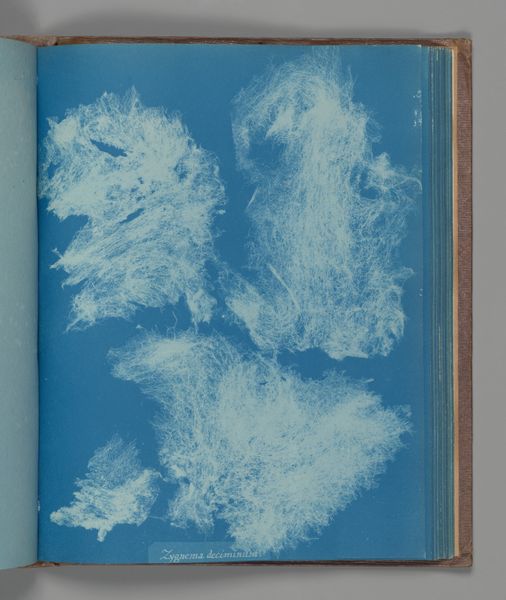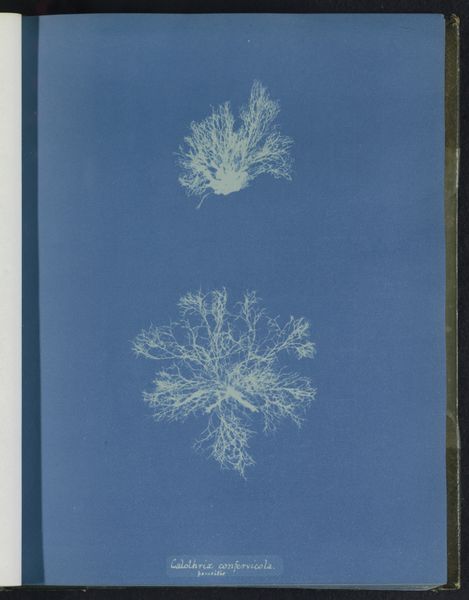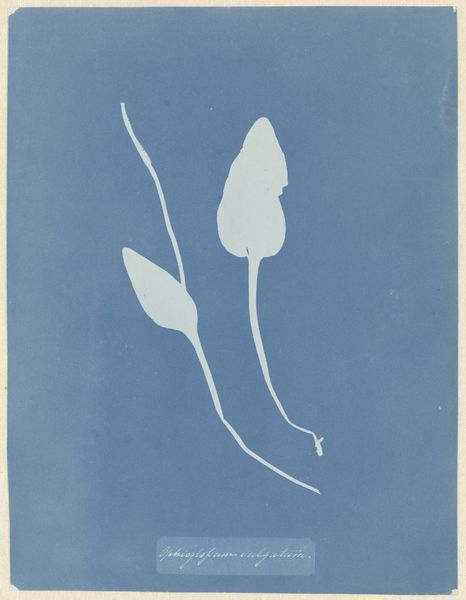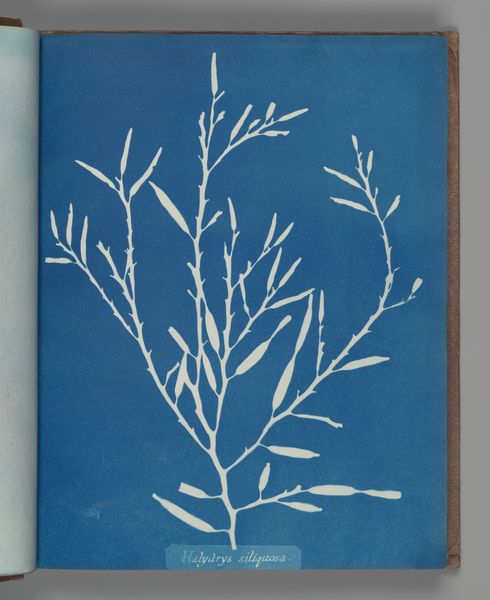
print, cyanotype, photography
#
still-life-photography
#
organic
# print
#
appropriation
#
cyanotype
#
photography
#
remaining negative space
Dimensions: height 250 mm, width 200 mm
Copyright: Rijks Museum: Open Domain
This is a cyanotype made by Anna Atkins in the mid-19th century, using a process that relied on the sun. It's an image of seaweed, rendered in Prussian blue and white. Atkins made this by placing the algae directly onto paper treated with iron salts. When exposed to sunlight, the uncovered areas turned blue, while the parts shielded by the seaweed remained white, creating a ghostly silhouette. It’s a photographic process, but one that completely dispenses with the camera. The cyanotype process was relatively new at the time, pioneered by the scientist Sir John Herschel. Atkins was part of a community of scientists, and her work was both artistic and scientific. It challenged conventional distinctions between these fields. Consider, too, the labor involved in collecting, preparing, and printing these specimens. By focusing on materials and making, we can appreciate how Atkins' cyanotypes offer a unique intersection of art, science, and the natural world.
Comments
No comments
Be the first to comment and join the conversation on the ultimate creative platform.
